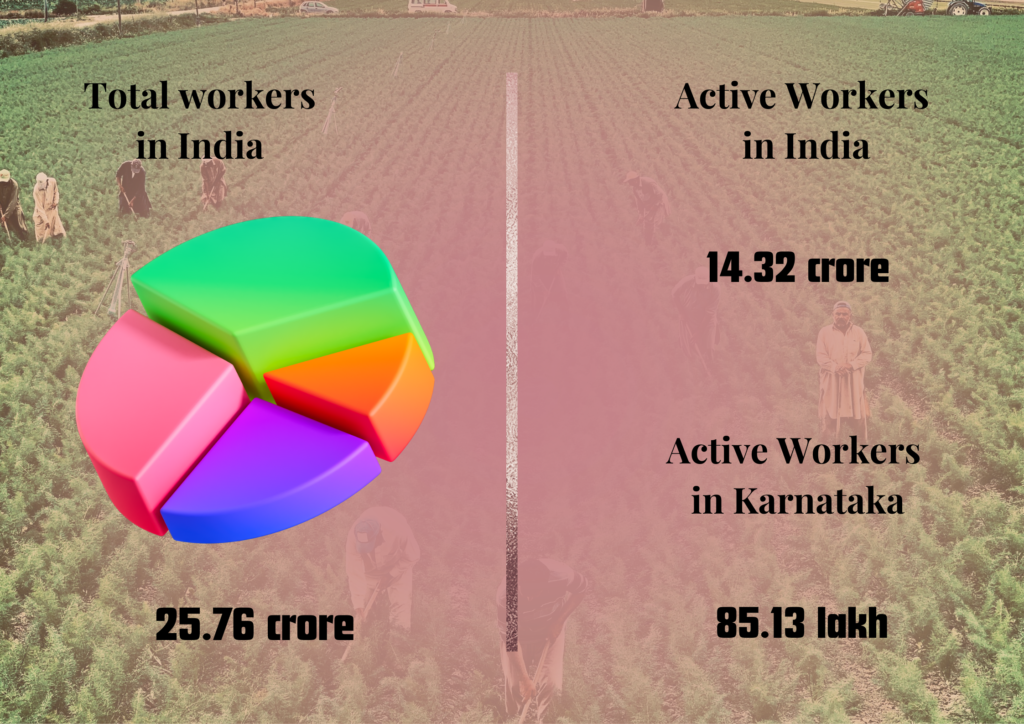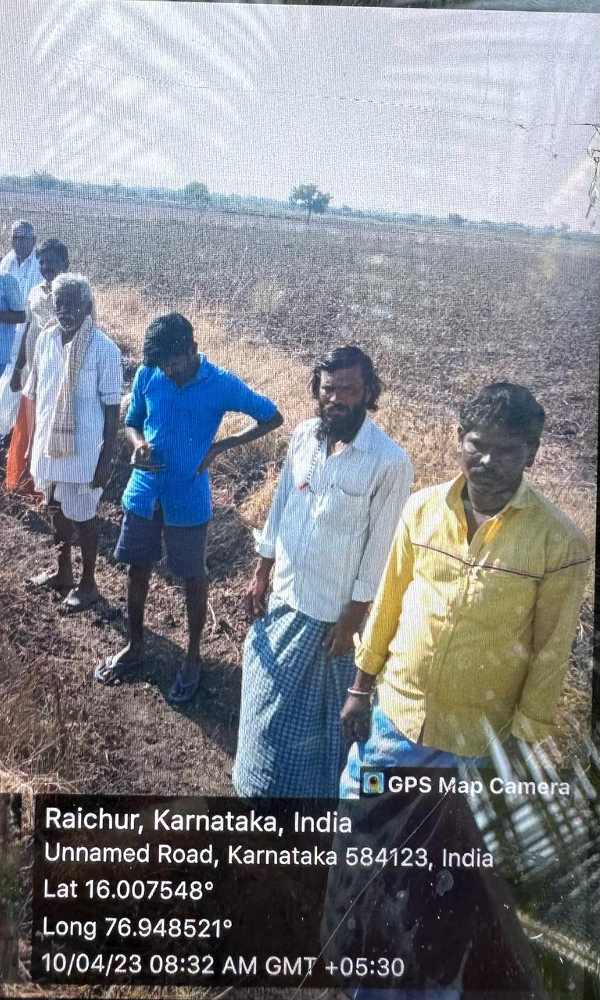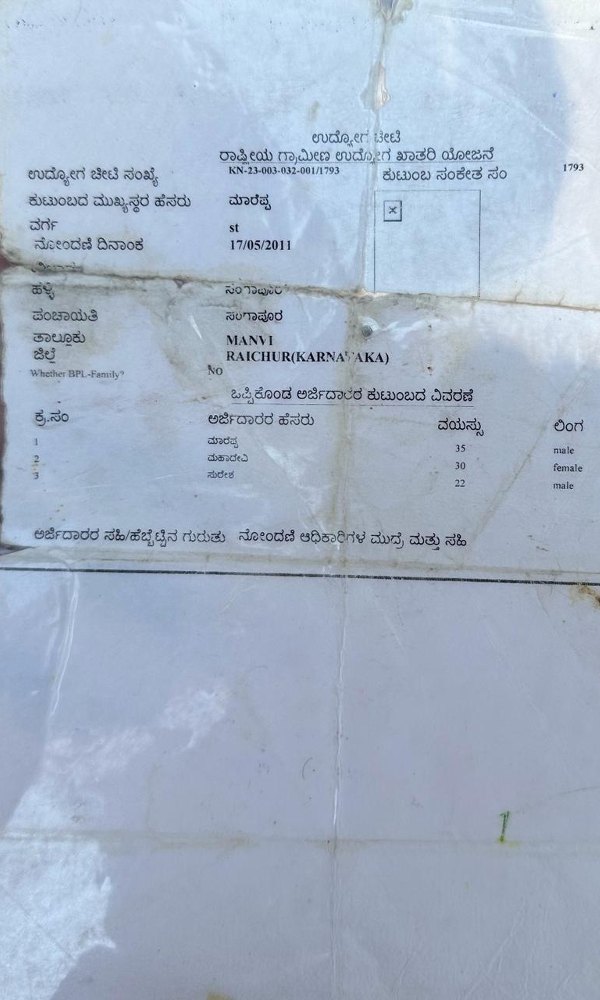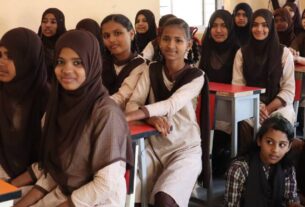With the Mahatma Gandhi National Rural Employment Guarantee Act (MGNREGA) failing to deliver employment in the taluk, people resort to moving to other cities to do private work.
Shankaramma, an old woman in her late 60s from Madlapur expressed with grief that she only got 40 days of work in 2023. The agony is that she did not get the payment for the work she did under the scheme till now.
Job card holders under MGNREGA in Manvi did not get the guaranteed 100 days of employment in 2023. A few cardholders said that they did not even get the money for the little work they did.
According to the MGNREGA data available on the Ministry of Rural Development website, Madlapur, Janekal, and Sanghapur are the three villages that failed to give 100 days of employment to the majority of the registered job card holders.
Weathered by time and despite the ache in her knees, Shankaramma had to work in the nearby fields as a contract worker. Though her knees stumbled, her spirit remained steadfast because she knew she had to earn to sustain her family. The problems did not end there, 70 percent crops failed in the village due to the drought conditions and she lost her job in the fields as well.

Based on official statistics, the average work days for active MGNREGA workers in India was merely 20 days per year. In Karnataka specifically, active workers received an average of 15 days of work during the 2023-24 period.
Shankaramma lost her job in the fields as well due to the loss of crops affected by the drought. With her eyes filled with tears, she said that she had to send her only son to Raichur to earn money. Her son works at a construction site in Raichur but the family still struggles to make ends meet.
Shankaramma is not alone in facing this; a lot of others in the village have similar problems. When the villagers went together to the Panchayat to get their money, they were told to leave which resulted in a fight. Post this incident, the Panchayat Development Officer (PDO) of the village was transferred. The newly appointed PDO, Sudarshan, is yet to solve this problem.
However, the Panchayat had everything different to say. Sudarshan (PDO) said that there are around 7,100 registered workers under the scheme out of which 4,100 are active workers. He said that they try to give work to all the registered people. This work mostly includes the construction of Nala and Talab, trenches, and plantation work, he added. However, people disagree with this and complain about lack of work and payment delays. Shankaramma and others complained regarding the lack of employment opportunities under the scheme, as well as the delayed disbursement of wages for however limited periods they did work.
According to the data on the website of the Ministry of Rural Development Government of India, 3,398 households in Madlapur did not get 100 days of work. Only 43 households got the work for 100 days.
Sudarshan said that three installments of payment are still left to be paid to the workers who worked in 2023 and the delay is due to lack of funds from the government. He said that people often go out of the village or out of the station to earn more money because they make better money than what they earn by working under MGNREGA. The wage per day under the scheme is Rs. 286. He added that they easily make around Rs. 500 per day by working privately.
MGNREGA scheme was designed to offer a minimum of 100 days of guaranteed wage employment per financial year to every rural household whose adult members are willing to undertake unskilled manual labor. The central government allocates funds for the MGNREGA scheme based on the employment demand in each state. Adult members of rural households who are willing to engage in unskilled manual work can register with their local Gram Panchayat. Upon registration, the household receives a Job Card within 15 days of application. Cardholders have the option to apply for employment in writing, with the provision that employment must be provided within 15 days of application; otherwise, an unemployment allowance is to be disbursed. Workers are compensated with daily wages for their labor. The scheme was implemented in 2006.
Manjunath, the Village Administrative Officer of Manvi said that this scheme is flawed and there are a lot of loopholes. “People don’t do any work; they just take photos at the site and get their money credited. Neither the people nor the officials are interested in getting the work done, they simply divide the money,” he said.
Jagdish Chour, the Tehsildar of Manvi had similar things to say. He said that the Panchayats get the Joseph Cyril Bamford (JCB) machine and other machines to get the work done and pay the money for the machines and other equipment. The rest of the money is divided between the people and the officials, he said. He added that both the authorities and the supposed beneficiaries are equally involved in this process, therefore, neither of them voice out any complaints against the scheme.
He added that the panchayat offices keep all the documents of the cardholders and update them however they wish. The share between panchayat and cardholders is fixed in every budget. That is one reason that not many people open their mouths against the scheme. It has become an easy way of doing nothing and getting the money, however less it may be, he said. He said that the scheme is highly unregulated and the central government has no control over the execution of this scheme at the grass-root level.
Gururaj, President of Grameena Koolikaarmikara Sanghatane (GRAKOOS) that aims to implement MGNREGA in rural areas said that there is a problem with job cards as most workers are not educated as to how they should be updated regarding the work they get or the money they receive for the same and hence, the panchayat officials update it however they like.

Furthermore, he said that the GPS is enabled at only one place at the site of work to record the progress of projects under the scheme so the officials get the work done near that particular area so that nobody questions them, and the surrounding areas are left just like that and no work is done.
Shivraj, another job cardholder from Janekal said that the Panchayat only gives work in the time of crop season when most people are busy working on fields. He said that people are free in the early months of the year as there is no work in the fields but the authorities don’t provide any work at that time. That’s why not many people turn up for the work. He added that it’s very hard to sit idle in the early months of the year as the work is not given when it is required the most.
He said that people often have to go to other cities to find work but not everyone can afford to go out of town to work by leaving their families alone.
Gururaj said that the panchayat officials give work at the time of harvest when the majority of people are busy working in the fields, they don’t give work when it is required in the real sense. People then are left with no choice but to go out of town to make money to sustain their families, he added.
The problem adds to unemployment, which is a huge problem at both state and country levels. Raichur is already an aspirational district. Aspirational districts are the districts that don’t perform great in the socio-economic sector and require special aid and attention for development. Unemployment is directly linked to the poor economic condition of the place.
The unemployment rate in India (as of Dec. 2023) is 8.9 percent. In March 2023, the unemployment rate in the state was only 2.3 percent but the situation of small taluks is different.
The National Rural Employment Guarantee Act, 2005 is “An Act to provide for the enhancement of livelihood security of the households in rural areas of the country by providing at least one hundred days of guaranteed wage employment in every financial year to every household whose adult members volunteer to do unskilled manual work and for matters connected therewith or incidental thereto.”
According to the provision of this act, the State Government shall, in such rural area in Guarantee of the State as may be notified by the Central Government, provide to every household whose rural adult members volunteer to do unskilled manual work not less than one hundred days of such work in a financial year following the scheme made under this Act.
It also ensures the disbursement of daily wages shall be made weekly or in any case not later than a fortnight after the date on which such work was done.
Janekal village, which has the second-highest number of people who didn’t get guaranteed 100 days of employment. According to the information from the Panchayat, 2,415 households in the village did not get 100 days of work. PDO of Janekal, Bassappa said that there are 2,260 households registered under the scheme in the village. The number of individuals is 5,220, out of this, only 699 individuals got 100 days of work in 2023.
However, according to the data on the website of the Ministry of Rural Development Government of India, In Janekal 2,424 households did not get 100 days of work. Only 8 households got the work for 100 days.
Amreshnayak, an MGNREGA cardholder said that he worked for three months around April and May 2023. He worked on the construction of a canal near an agriculture field and got 90 days of work. He complained that he did not get payment for the last 15 days of his work yet. He took the matter to the panchayat but no action was taken.
He said that there is no surety of getting work under the scheme and the wages are also very low. He said that almost everyone has to work in fields or other private places to sustain themselves. He added that it’s always better to work for a field owner or at any other private place as those people give money timely and the amount given is better than what they get under the scheme.

Anmesh, a 32-year-old person with an MGNREGA job card in Sanghapur, the third village to not deliver 100 guaranteed days of employment to the majority of its job cardholders, said that he only got work for seven days in 2023 and the payment of the same is still due. He has two young children, a 7-year-old and a 5-year-old to take care of. He said that it’s difficult to leave the family alone and search for a job elsewhere.
Marappa and his wife Mahadevi had a similar story to tell. The last time they got money credited to their accounts for the work they did was nine months ago.
The PDO of Sanghapur, Asra Khan said that a total of 2,273 households are registered under the scheme in the village. Of this, only 18 households got 100 days of work. She added that the crops failed last year so the panchayat tried to give employment to farmers also.
People on the other had a mixed opinion as some said that they got the work while others said that they got work for just seven to eight days. The data on the other hand says something else. Such differences in statements and facts available on the website show how many loopholes this scheme has.
This contrast in the statements of Panchayat Development Officers and two major sections of people where one says that they don’t get work and money while the other segment says that everything is on track and they get both money and work on time shows that there are a lot of loopholes in the scheme and the way it is implemented.
The Village Administrative Officer and Tehsildar hinted at the corruption that takes place during the entire process, this can be justified by the differences in the numbers on the website and the numbers provided by the Panchayat. The numbers given by the PDOs in all three villages and the numbers on the government website differ to a large extent.
People in Mustur village were going through the same problems. Anamanth Rai, a job card holder said that he got just 14 days of work in 2023. He said that half the people in the village are yet to get the payment for the work they did. He added that the panchayat has the job cards of all the people. “We don’t know what they do with it or how it is updated as per the work we do,” he said.
Anamanth, the head of the family of five, four adults and a newborn said that it is hard to sustain without work. He does whatever work is available like farming and at other times he has no choice but to sit idle. He added that this year, there was not much work on the fields due to drought and he had no work at all, so he had to take money from friends and relatives to survive.

Prof. T.H. Murthy, Head of the Department of Rural Development Studies at Bangalore University explained that the panchayat is responsible for implementing the act at the grassroots level. He said, “It is the responsibility of the rural government administration to provide basic infrastructure. The employment activities should be linked to the creation and/or maintenance of the local assets and infrastructure like the construction or renovation of water tanks and small dams, canals, schools, roads, and health care centres. The focus should be on the needs of the people, their skills, geographical area, and the assets of that region. If this link is established, then the problem of employment generation will be reduced to a great extent.” He also suggested that the merits and demerits of this act should be discussed at the college level so that public discourse is provoked and more such solutions come to light.
Prof. Murthy said that community organizations like local religious trusts and cultural trusts should be used to enhance the performance of the act. These trusts and local groups have an impact in the region and can help bring about significant success to this act at the grassroots level.
He stressed the need to put the last man first, who is away from development activities because if he is provided with the solution then the larger problem of employment will be solved.




